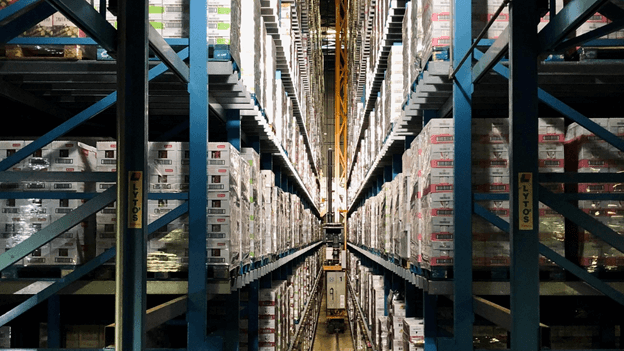Currently, organizations have at their disposal a wide range of Business Management Solutions that aim to improve their performance in different ways.
To accomplish that in stock management there is a key solution: using an ERP (Enterprise Resource Planning) and a WMS (Warehouse Management System). If working completely integrated, it is possible to optimize all the operational processes related to stock management as well as to have a more precise delivery planning to customers.
What to expect from an Enterprise Resource Planning (ERP)
An ERP solution comprises all the modules that a company needs to support its activity (procurement, inventory, sales, accounting, human resources, manufacturing, etc).
It is expected that an ERP guarantees the timely availability of raw materials, controls the costs and efficiency of the production process, automate manual processes, controls stock, manage the accounting effectively and decentralize communication with stakeholders.
What to expect from a Warehouse Management System (WMS)
A Warehouse Management System (WMS) is a software that is developed to better organize the storage space of a warehouse as well as to give a better control over the operational activities.
It is expected that a WMS eases warehouse workers’ tasks, being able to use scanners to input data, indicating where the stock is physically located, abolishing paper usage within the warehouse, reducing the errors of bad picking, etc.
In this way, it is possible to improve the productivity of the operators, the space available for storage and reduce the workload peaks.
Logistics WMS consists of the following modules:
- Inbound
- Outbound
- Inventory Management
- Planning
- Control
- Audit
Across all the above there’s the master module called Intelligence (that’s where all the magic happens!).
The real-time control over all logistical activities, as well as the possibility to optimize processes and support strategic decisions, makes this solution an important part of any supply chain.
The application also provides API’s for online integration of inbound and outbound movements with any ERP or other software (such as marketplaces, carriers, etc). Despite they are two different softwares, the integration of inbound and outbound movements is so smooth and in real time that it seems there is only one software working!
Why to work with integrated solutions?
Only through the integration of different softwares it is possible to take full advantage of a truly digitilized warehouse!
The non-automatic integration of all logistical processes between the WMS and the ERP, for instance, requires the creation of manual processes to fullfil this gap, requiring an exhaustive work of matching movements to ensure the correct management of an organization’s inventory.
With regard specifically to stock management, the integration of ERP and WMS in an organization allows it to obtain a series of benefits, such as:
- Transparency of processes for users, both on the Commercial / Administrative side, and in Logistics
- Elimination of manual processes, with productivity improvement
- Elimination of parallel controls – in spreadsheets, emails or telephone contacts
- Elimination of concerns about the accuracy of the data (after inserting the information in one system, the other is updated automatically, eliminating the main source of errors and providing reliable information for the stock management)
- Possibility for managers to have access to information in real time (receipt of goods, picking, replenishment, shipping orders, returns from Suppliers and Customers, inventories), increasing logistical and company efficiency as a whole.
Conclusion
Do you want to know in advance what is about to arrive at the warehouse and guarantee full traceability of your stock?
There are several reasons why you should choose for an integrated solution between Logistics WMS and your ERP, including: – Automatic and optimized planning of tasks in the warehouse:
- Increase in productivity of warehouse employees and commercial and administrative
- Control of what happens in the warehouse: vision of what is planned, unplanned, delayed, to be carried out
- Easy to use: modern application, user friendly, scalable and personalized, with a low learning curve.

